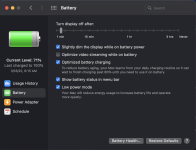I've owned several Mac Minis. Those machines are awesome, and I've used them as everything from a HTPC to a mail server to industrial controller. Just the right size where it can pack some power and not be too expensive, and small enough that you can toss it behind the screen or tuck it out of the way. The Studio is a bit more of an investment though, and a bit taller.
I can also say the regular M1 is no slouch. Having ... 6 (+/- ?) of them ... might just be overkill. Unless, of course, you are actually crunching 8K video or training AIs or doing something real. Yeah, I would love to own a studio - but I have no idea what I would do with it. Kinda like a boat - I'd love to own one, but no idea when I'd ever get it out on the water.
I have a M1 13" MBP. I can say hands down it's the best laptop I've ever owned. I wouldn't call it the fastest computer I've ever owned, but it's snappy, gets great battery life, doesn't get hot or loud, feels extremely solid and well built, and runs Office, email, web browsers, and has a native Unix terminal -- all the things I really look for in a laptop
I do have two reservations about it though. I wish I had the 16", coming from a long line of 15" I have a really hard time adjusting to the smaller screen. That, and I have a large library of x86 virtual machines that I use for various things at work that I can't run on it any longer - I have a cheapo $350 laptop just for the purpose of running those tools when I absolutely need them, which is unfortunate, but not a frequent occurrence. I need to get around to trying ARM Windows and see if that software will run there, but haven't fooled with it.

